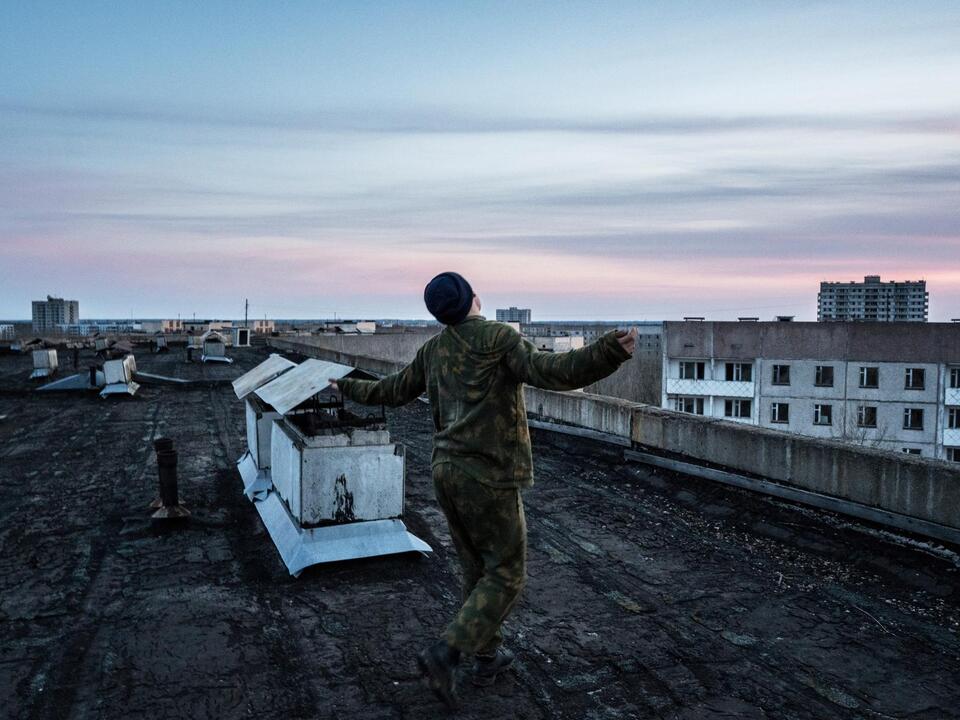Physical Address
304 North Cardinal St.
Dorchester Center, MA 02124
Physical Address
304 North Cardinal St.
Dorchester Center, MA 02124

The disaster began early on the morning of April 26, 1986, with the explosion of reactor 4 at the Chornobyl Nuclear Power Plant, located just four kilometers from Pripyat in the Ukrainian region of what was then the Soviet Union. Tons of radioactive dust were released into the atmosphere, spreading across both hemispheres. It’s estimated that the worst-affected region, which covers 260,000 square kilometers of Belarus, Ukraine, and western Russia, will remain radioactive for roughly 20,000 years.
Photographer Pierpaolo Mittica first visited Chornobyl in 2002 and has since returned about 25 times. Years before the plant’s Control Room No. 4, "The room that exploded," was cleaned up for tourists, he obtained special permission to enter wearing a protective suit. "You are inside history," he remarks. "In that place, the disaster started. The feeling was powerful."
After the accident, thousands of people were evacuated, leaving behind their homes, jobs, and communities. A 30-kilometer exclusion zone was established around the nuclear plant. The nearby city of Pripyat, previously home to 50,000 inhabitants, was abandoned. Despite this, today, an estimated 4,000 workers make up the exclusion zone community. "The zone must be protected, and the plant has to be kept in a safe condition," Mittica explains. "There are army personnel, police, firefighters, and operators of the power plant."
Mittica’s images in his new book, Chernobyl (using the Soviet-era spelling), focus on human stories inside the zone. He includes official workers, resettlers (known as the "samosely") who preferred to return home rather than stay in Kyiv, "stalkers" (young adventurers who illegally explore the zone), and international tourists. Chornobyl also holds significance for the Hassidic Jewish movement, with annual pilgrimages to the area.
Since Russia’s invasion of Ukraine on February 24, 2022, the exclusion zone has been tightly controlled by Ukraine’s Ministry of Defence. "It’s a border area with Belarus, so all access is forbidden," says Mittica. The stalkers, Jewish pilgrims, tourists, and most of the resettlers have left. "With the war in Ukraine, all these stories have changed or no longer exist. My book is the last record of what the exclusion zone was like before the war."
Meanwhile, the 9 million people living in contaminated areas of Belarus, Ukraine, and western Russia have been "totally forgotten," Mittica notes. Children he has photographed have since died from cancers and other radiation effects. "It’s really sad to see a child who has lost hope of living a life that has just begun." People are also giving birth to children with "malformations," which Mittica understands are likely to worsen with each generation.
The message from the book is that "humans cannot control everything absolutely," Mittica asserts. He also argues that the disaster demonstrated "to the world that nuclear energy is too dangerous for humanity." The project provided another lesson for the photographer: that nature is resilient. "The zone is now like a natural reserve. Animals—foxes, wolves, bears, boars—are returning. Streets and squares in Pripyat have dense forests. I realized we’re not destroying nature; we’re destroying ourselves. There are millions of years for nature to recover."
Chornobyl by Pierpaolo Mittica is published by GOST.
Source: [Source names]
When tourists arrive at Chornobyl, there’s a checkpoint before they can enter the exclusion zone. There’s a shop selling items like T-shirts, flags, mugs, and badges. Before COVID-19, there were about 60,000 to 70,000 tourists a year. For an economically depressed area, it’s highly significant. However, most tourists seem primarily interested in taking selfies in "dangerous" places.
Stalkers are young Ukrainians who enter the exclusion zone illegally. Mittica noted that he slept for two nights in Pripyat with the stalkers. They would go to rooftops, drinking and dancing, embodying a sense of freedom you would not find elsewhere. "You feel like the last people in the world, free from all the routines of life," he said, capturing the feeling in his photos.
Ania, a six-year-old girl from a small town outside the exclusion zone, exemplifies the human toll. Children in contaminated areas are suffering from genetic mutations and radiation-related illnesses. Ania had a malignant bone tumor and, despite being a strong, positive child passionate about art, her survival was uncertain.
Chornobyl city is home to the grave of Rabbi Menachem Nochum Twersky, one of the founders of Hasidism. Hassidic Jews make annual pilgrimages to visit the tombs of the founders and an old synagogue, which survived Soviet attempts to erase all religions.
Mittica also photographed a worker inside Control Room No. 2. Although three reactors were relaunched and gradually decommissioned, maintaining the nuclear power plant requires constant upkeep by some 2,000 workers to ensure safety until it can be fully decommissioned by 2065.
In another poignant image, Mittica captured Pasha, a man repairing an engine used in radioactive scrap metal recycling facilities. This lucrative but risky work involves sandblasting radioactive surfaces, causing significant health hazards for the workers who breathe in radioactive particles daily.
Source: [Source names]



